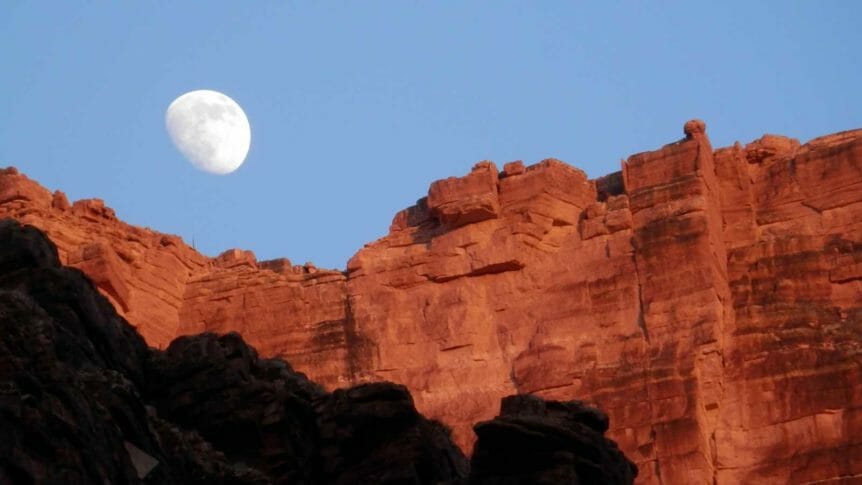The full moon tonight is actually a Blue Moon. It’s not really blue, but refers more to the phrase “Once in a Blue Moon.” When a season has four full moons, instead of the normal three, the third full moon is called a Blue Moon.

PC: GCE Guest Jean-Pierre D.
Once in a Blue Moon someone like you comes along. ~ Van Morrison
When you look up at the night sky and see the moon, do you ever wonder how it got there?
Some Scientists believe that a mars sized body collided with earth about 95 million years after the creation of the Universe. The pieces that got knocked off the Earth then went into orbit around our planet because of Earth’s gravitational field. This theory is a more popular one because the moon and the earth have similar composition. Another recent theory is that the Earth stole the moon from Venus.
Whatever it’s origins, the moon is an important terrestrial being to Earth. It Orbits us once per month, and serves as a satellite. The moon even affects the tides because of its gravitational pull to the Earth. The separate orbits between the Earth and the Moon actually affect each other too! Because the Earth spins so quickly, and the Moon so slowly, they produce a change in each other’s rotation.
“…The force between the Earth and the Moon is not exactly along the line between their centers producing a torque on the Earth and an accelerating force on the Moon. This causes a net transfer of rotational energy from the Earth to the Moon, slowing down the Earth’s rotation by about 1.5 milliseconds/century and raising the Moon into a higher orbit by about 3.8 centimeters per year.” (nineplanets.org)
We aren’t the first society that has been wondering about ‘ol Luna though, (Luna is Latin for “Moon”). The Ancient Greek’s were the first society to try and understand our satellite. They studied (and overestimated) the size. More recently, in July 1969 NASA sent an spaceship up, and Neil Armstrong was the first man to walk on the moon. Since then, 12 human beings have walked on it. In modern times NASA is still one of the main government organizations that observes and learns about the moon. In fact, here are some interesting tidbits from NASA:
- Second brightest object in the sky apart from the sun
- The moon has no atmosphere
- Average distance from Earth : 238,855 miles
- Most rocks on the moon are between 3 and 4.6 billion years old
- The moon’s year (length of time it takes to orbit the earth) is about 27 Earth Days
- The minimum temperature is -387 degrees F, and the maximum is 253 degrees F
- If the sun were as tall as a typical front door, Earth would be the size of a nickel, and the moon would be the size of a green pea.
– NASA (http://solarsystem.nasa.gov/planets/moon)
Sources:
“All About the Moon | Scholastic.com.” Scholastic Teachers. Web. 05 Apr. 2016.
“A BRIEF HISTORY OF THE MOON.” A History of the Moon. Web. 18 May 2016.
“Earth’s Moon: Overview: Our Natural Satellite” NASA. Web. 18 May 2016.
“The Moon.” L Phases, Orbit and Distance from the Earth. Web. 06 May 2016.
“Moon Facts: Fun Information About the Earth’s Moon.” Space.com. Web. 05 Apr. 2016.
What is a Blue Mooon (http://www.timeanddate.com/astronomy/moon/blue-moon.html)

